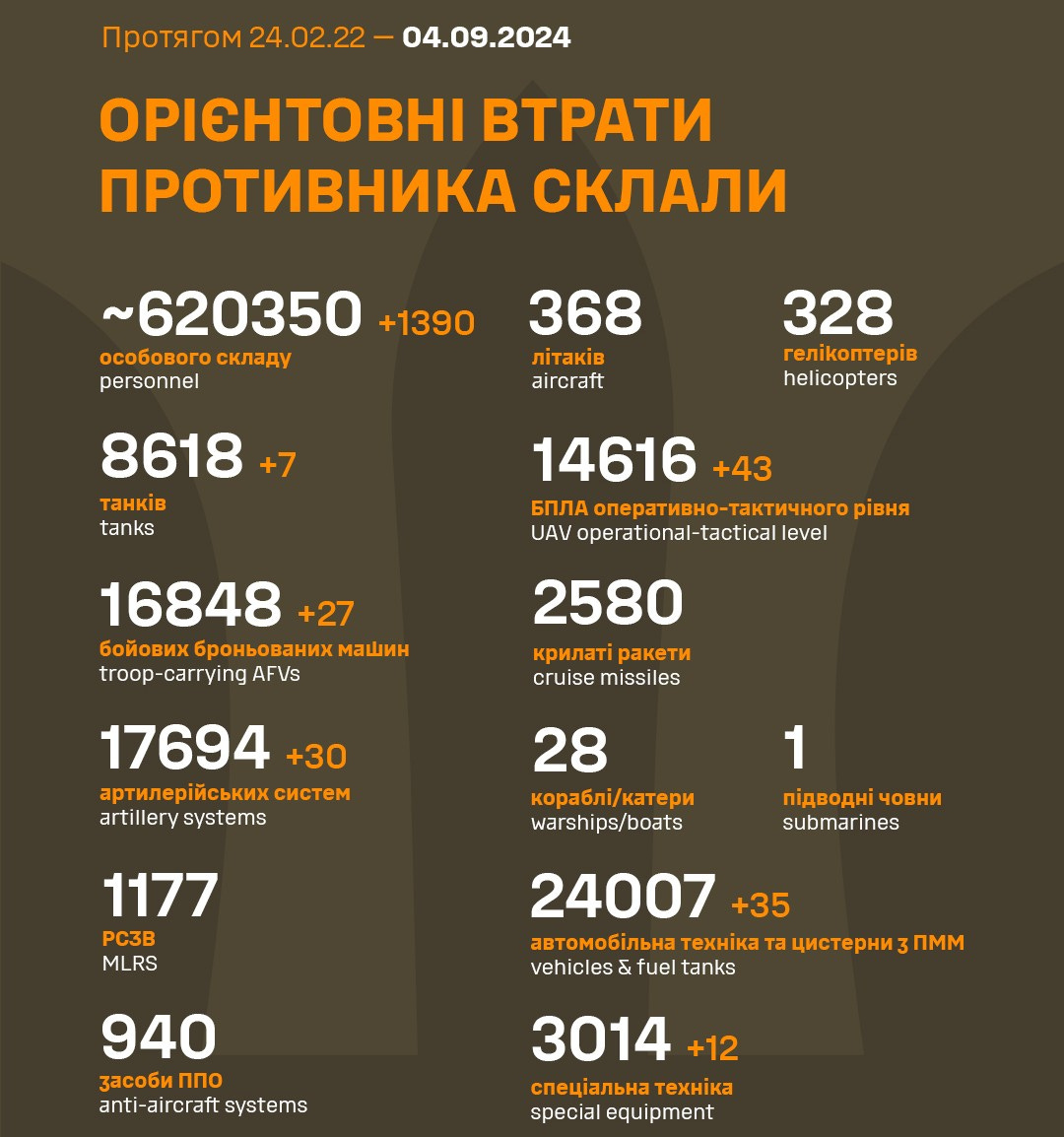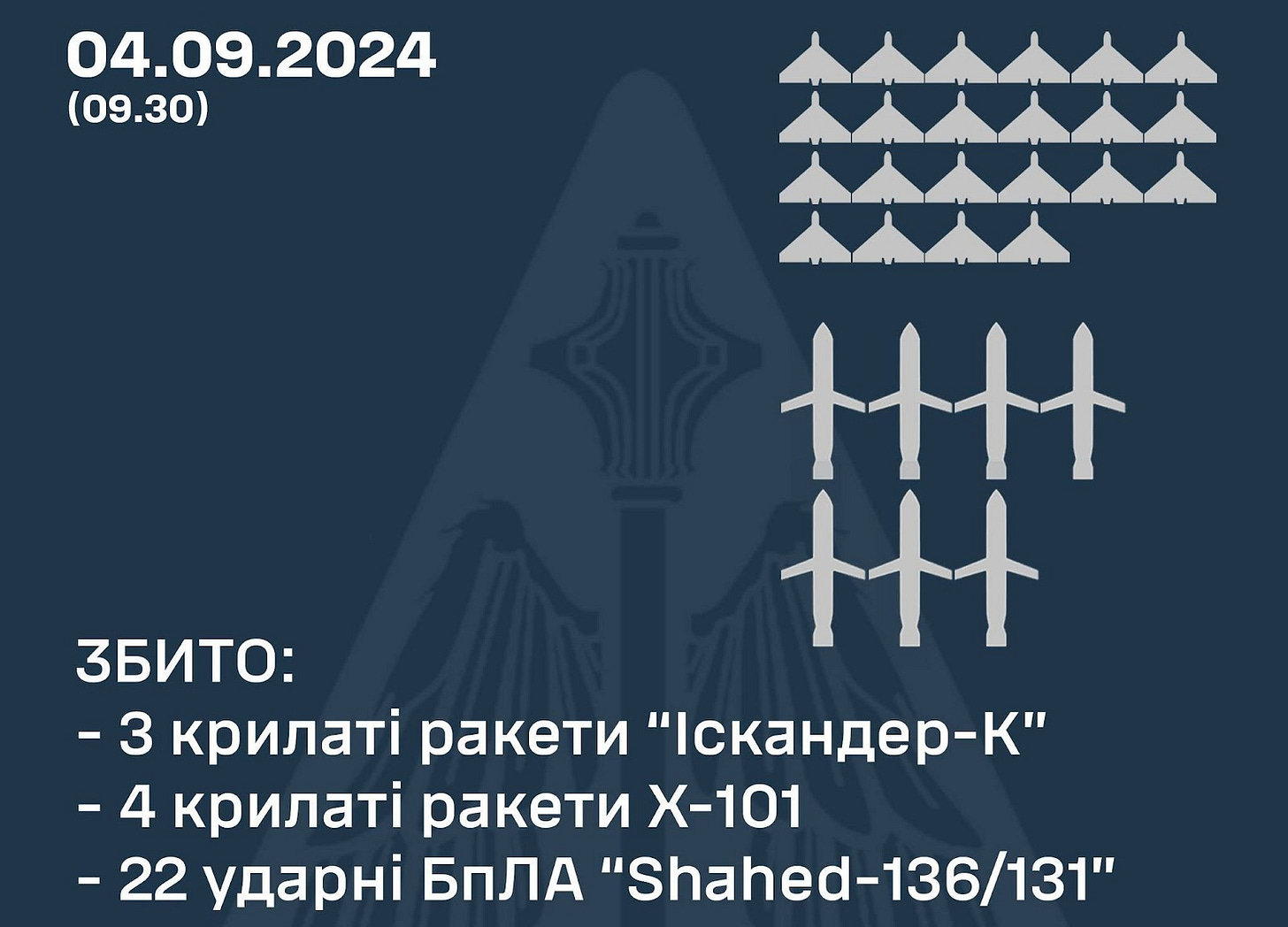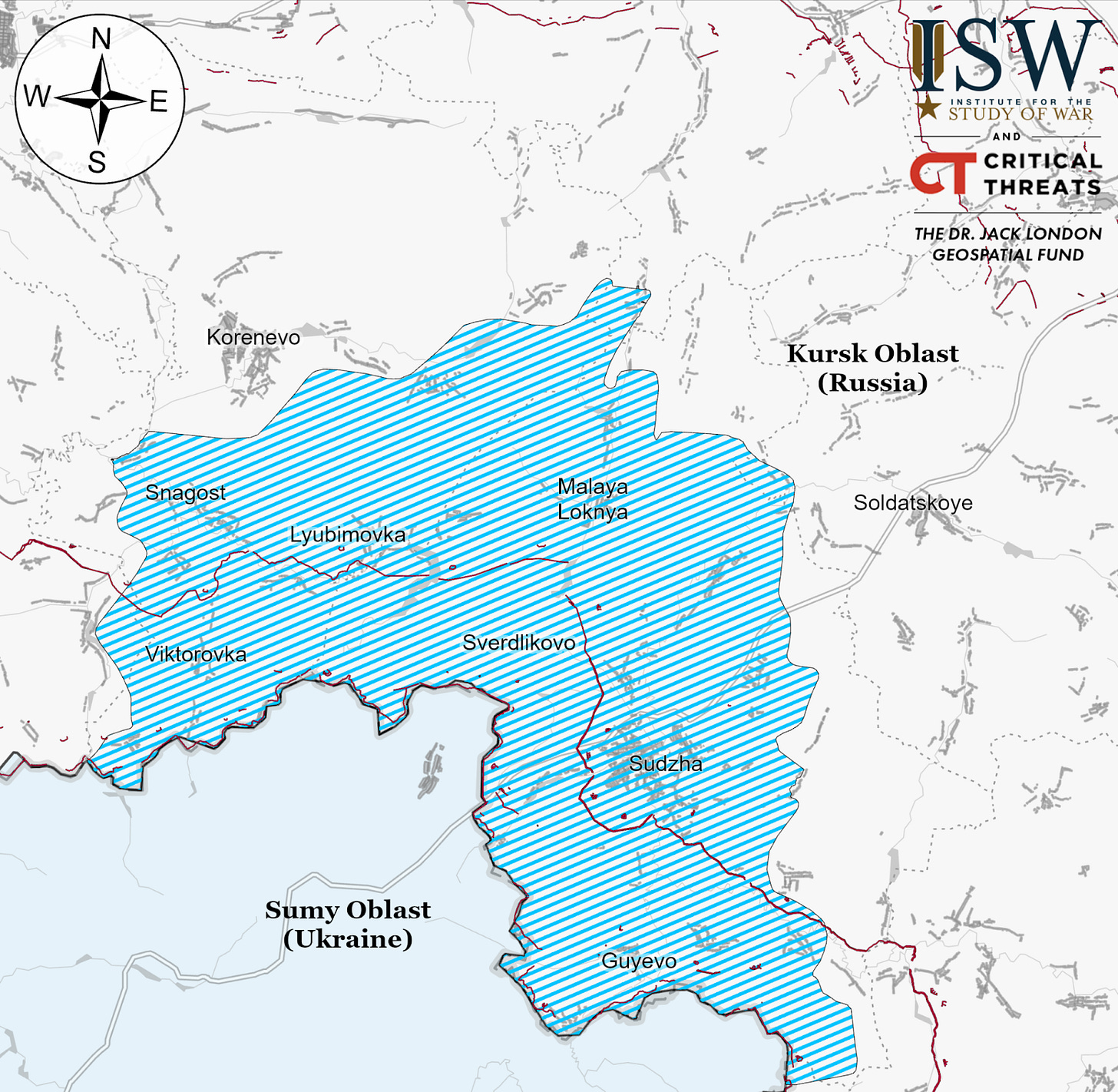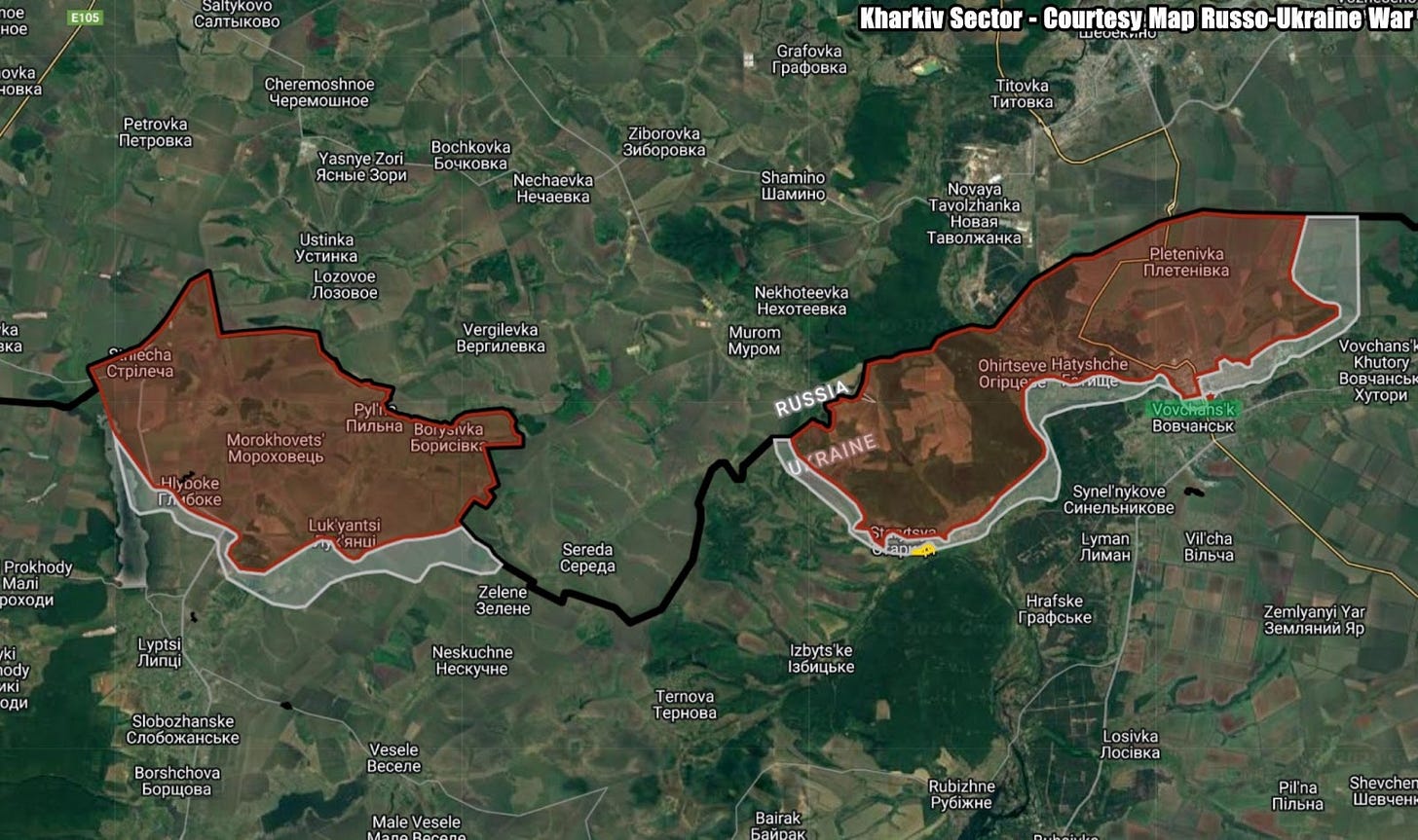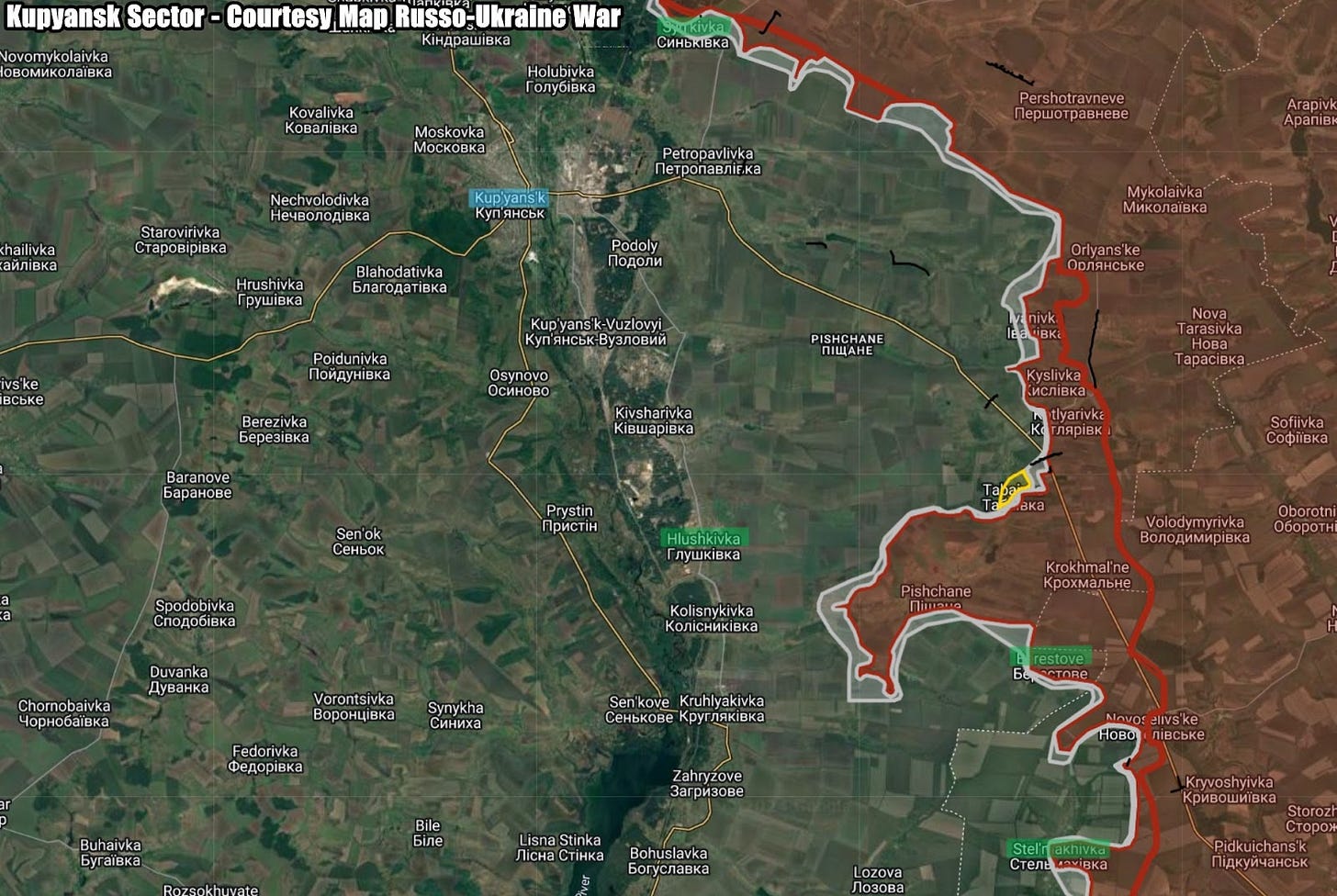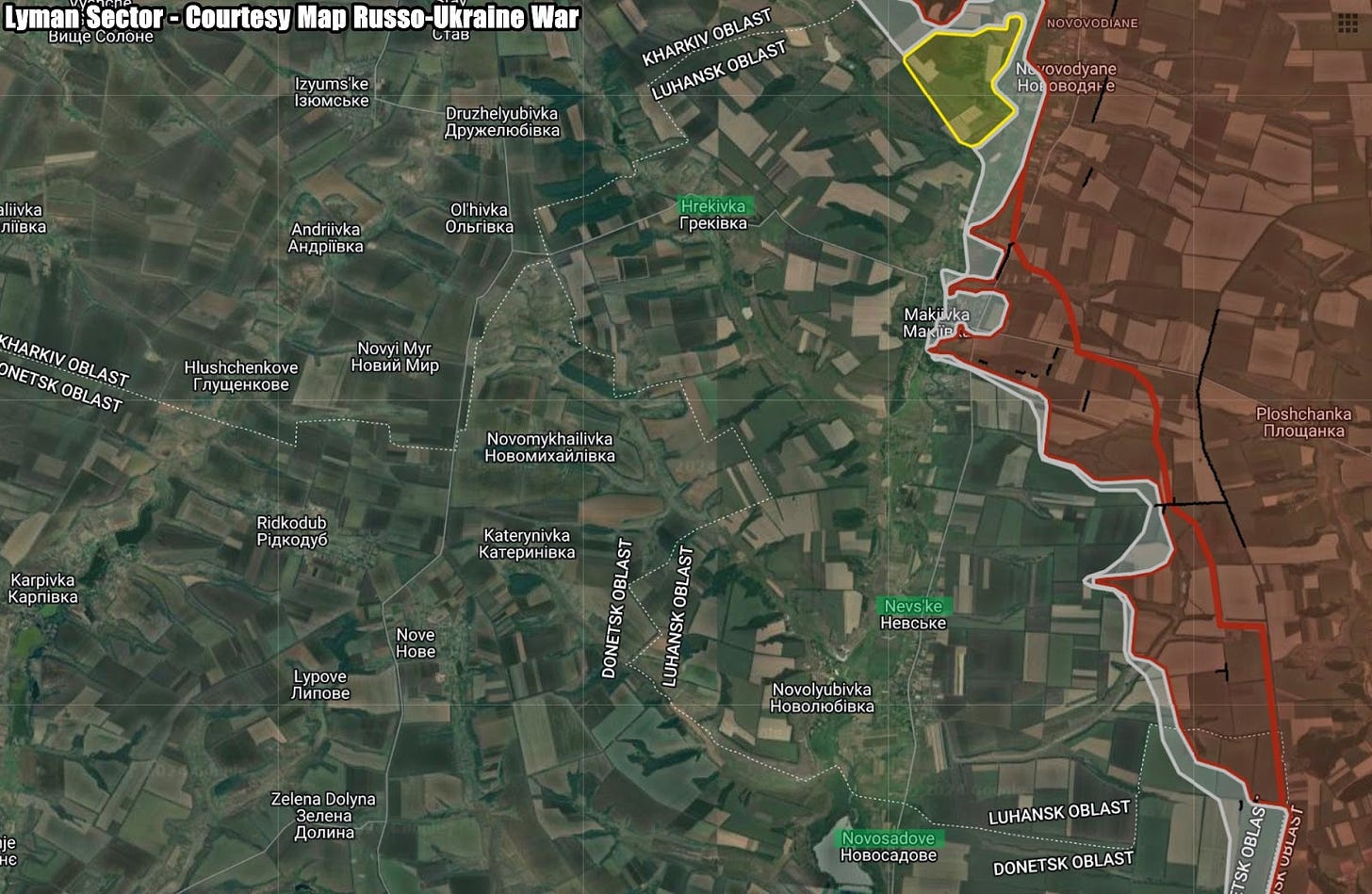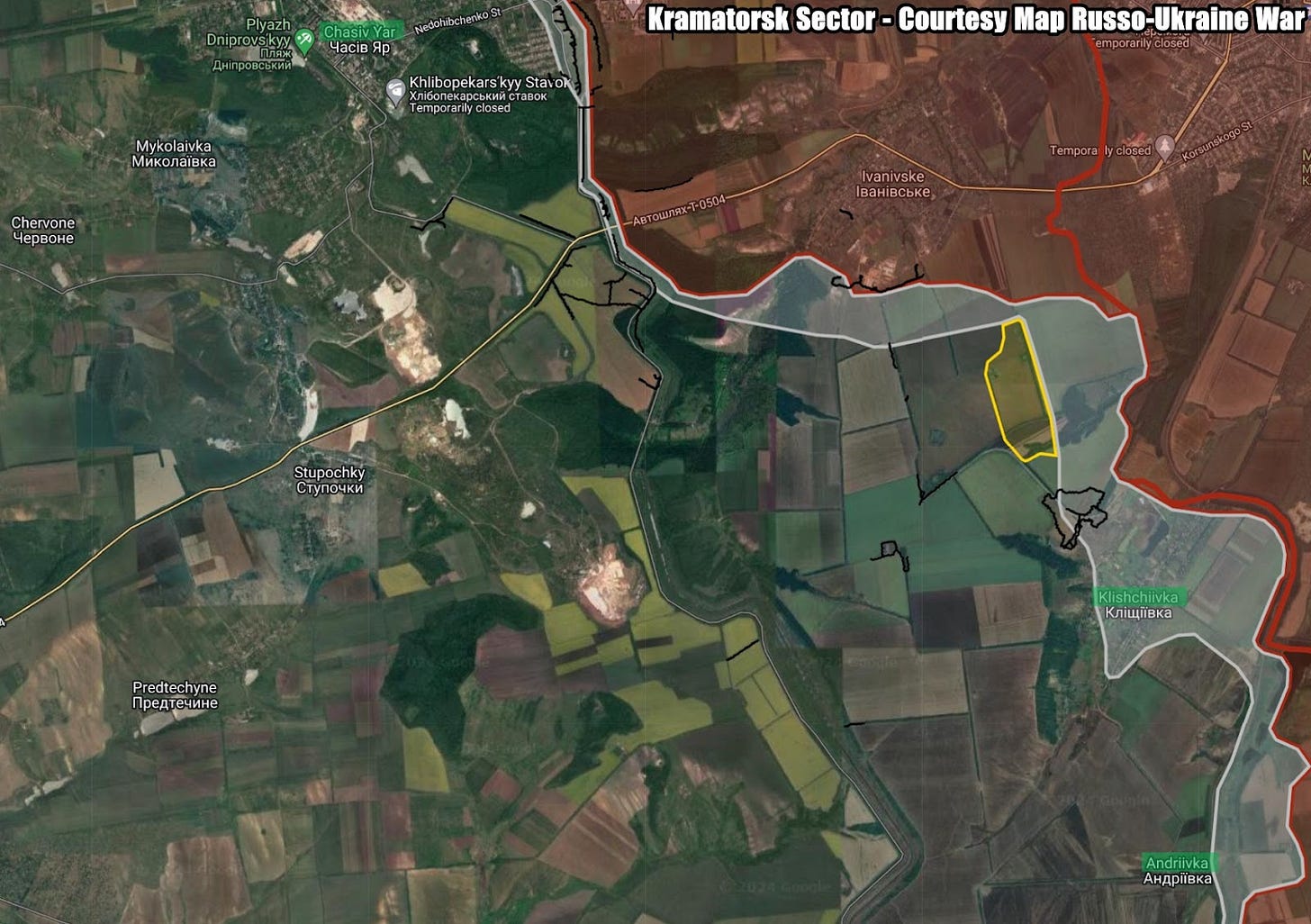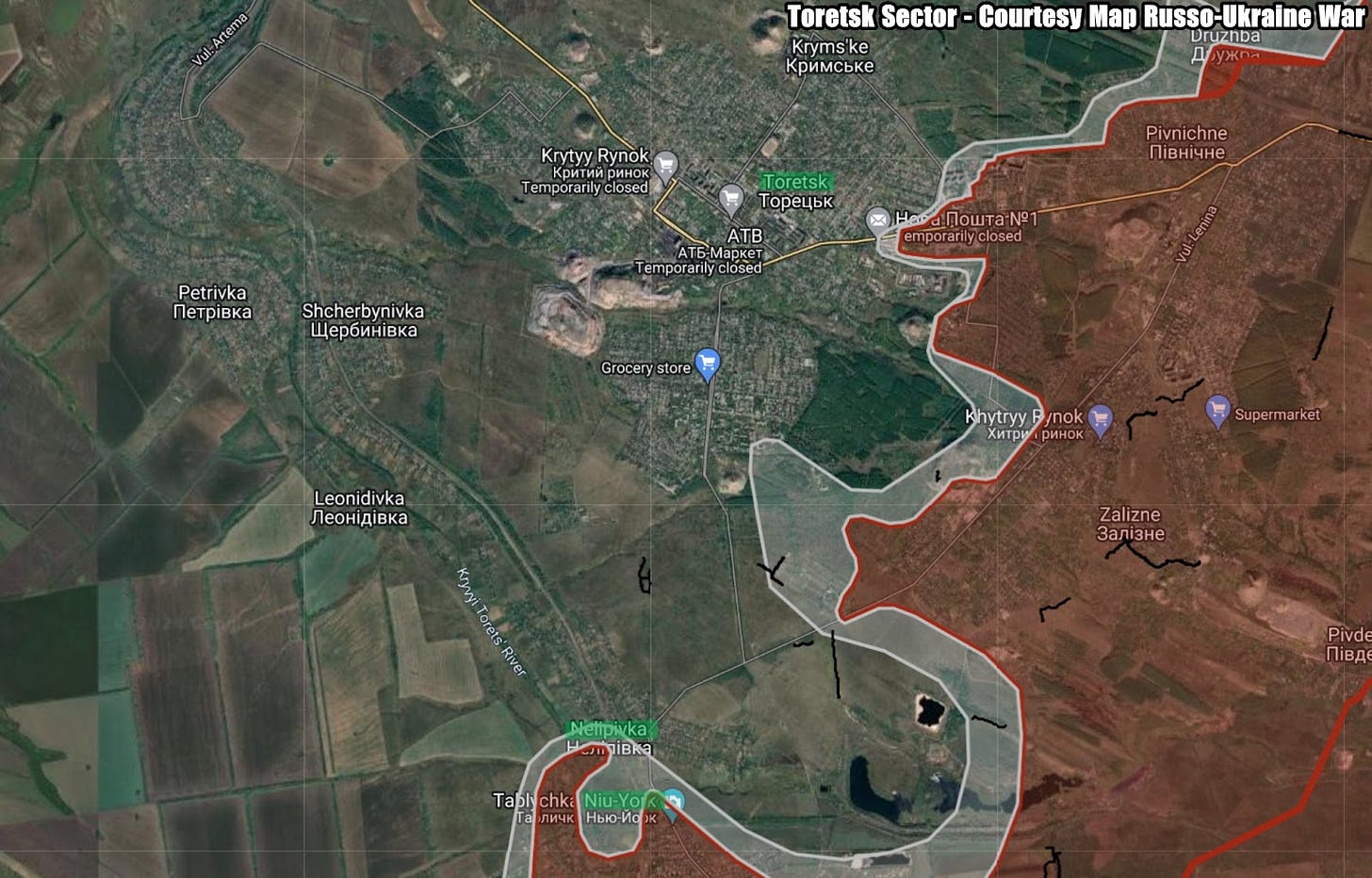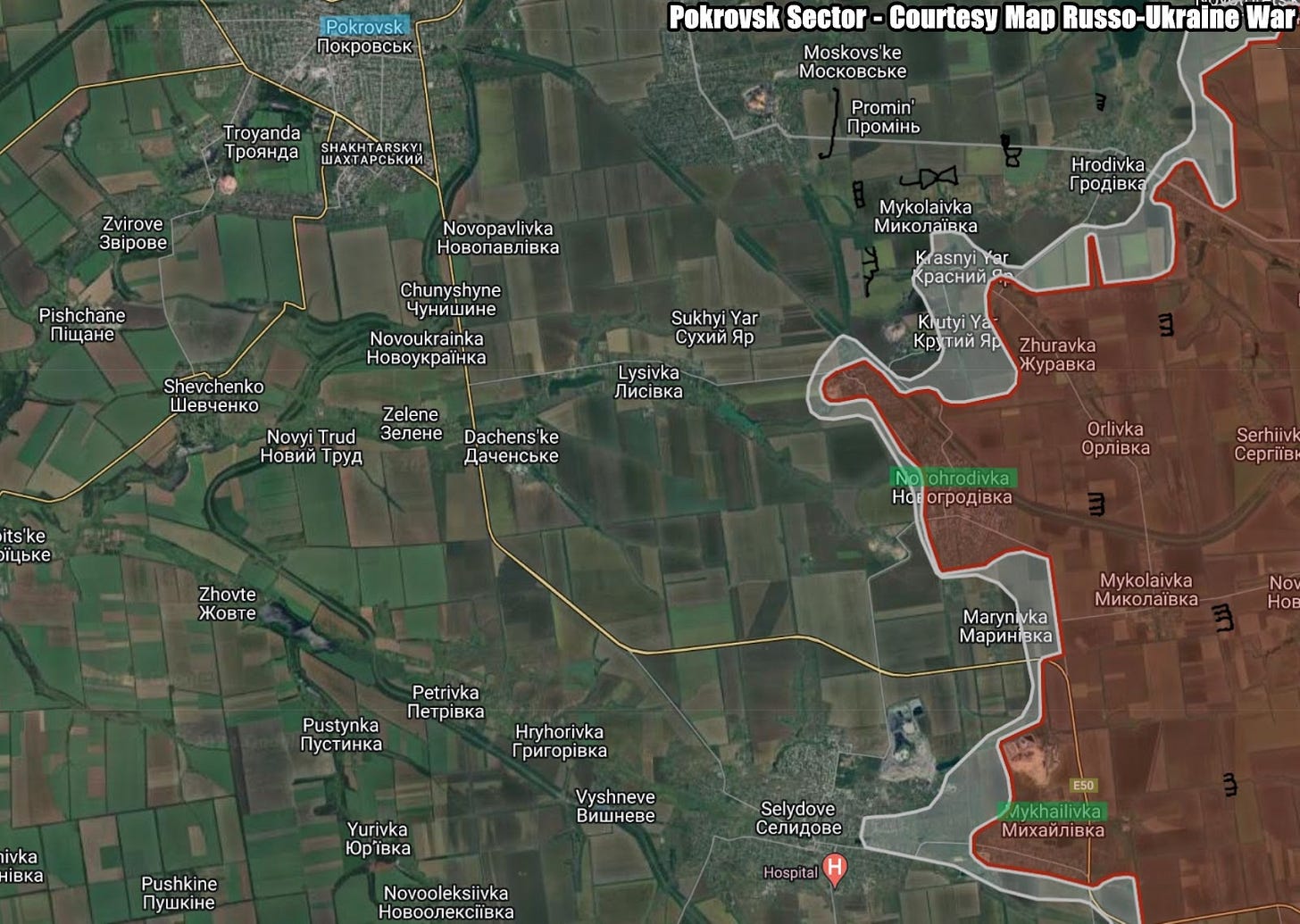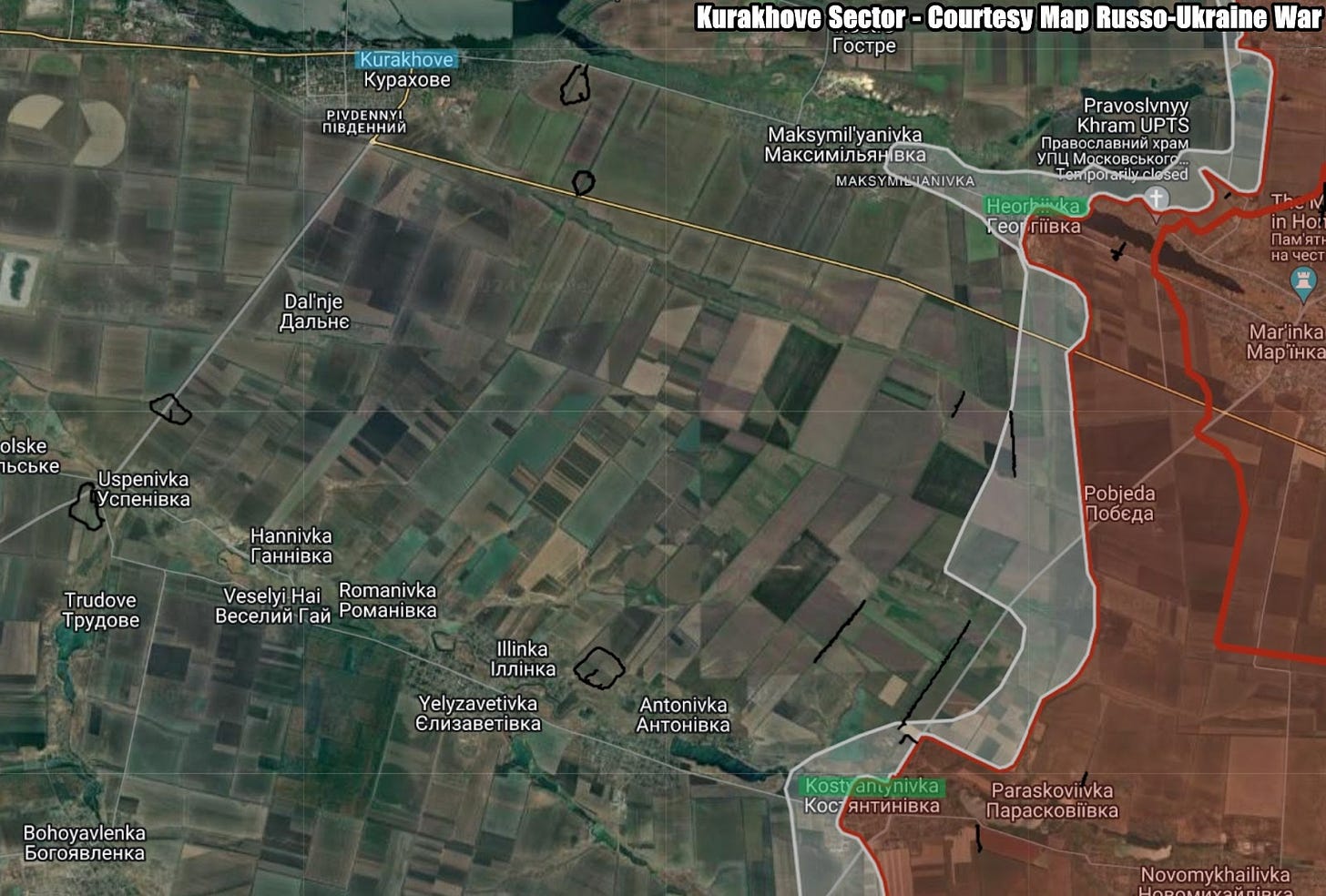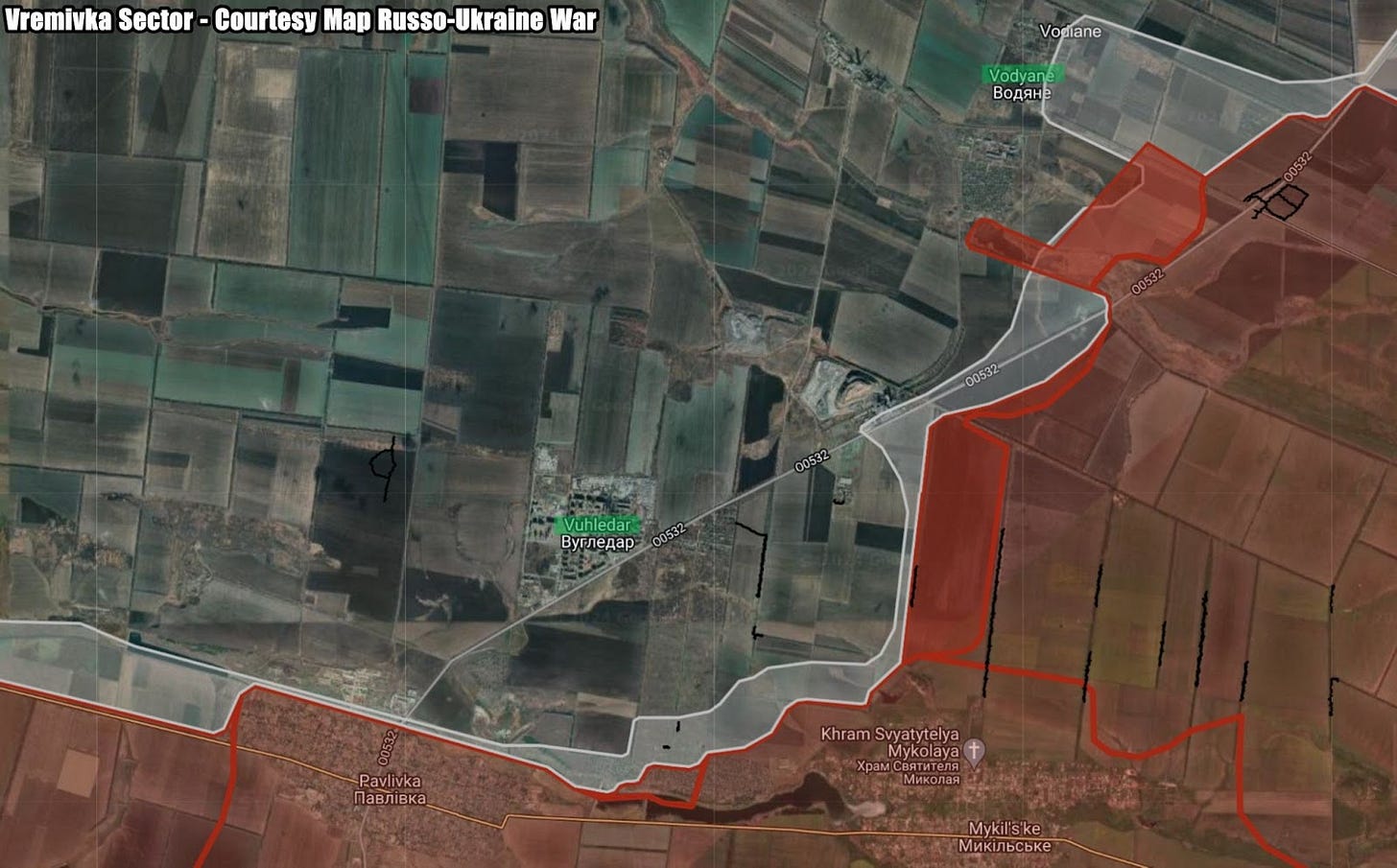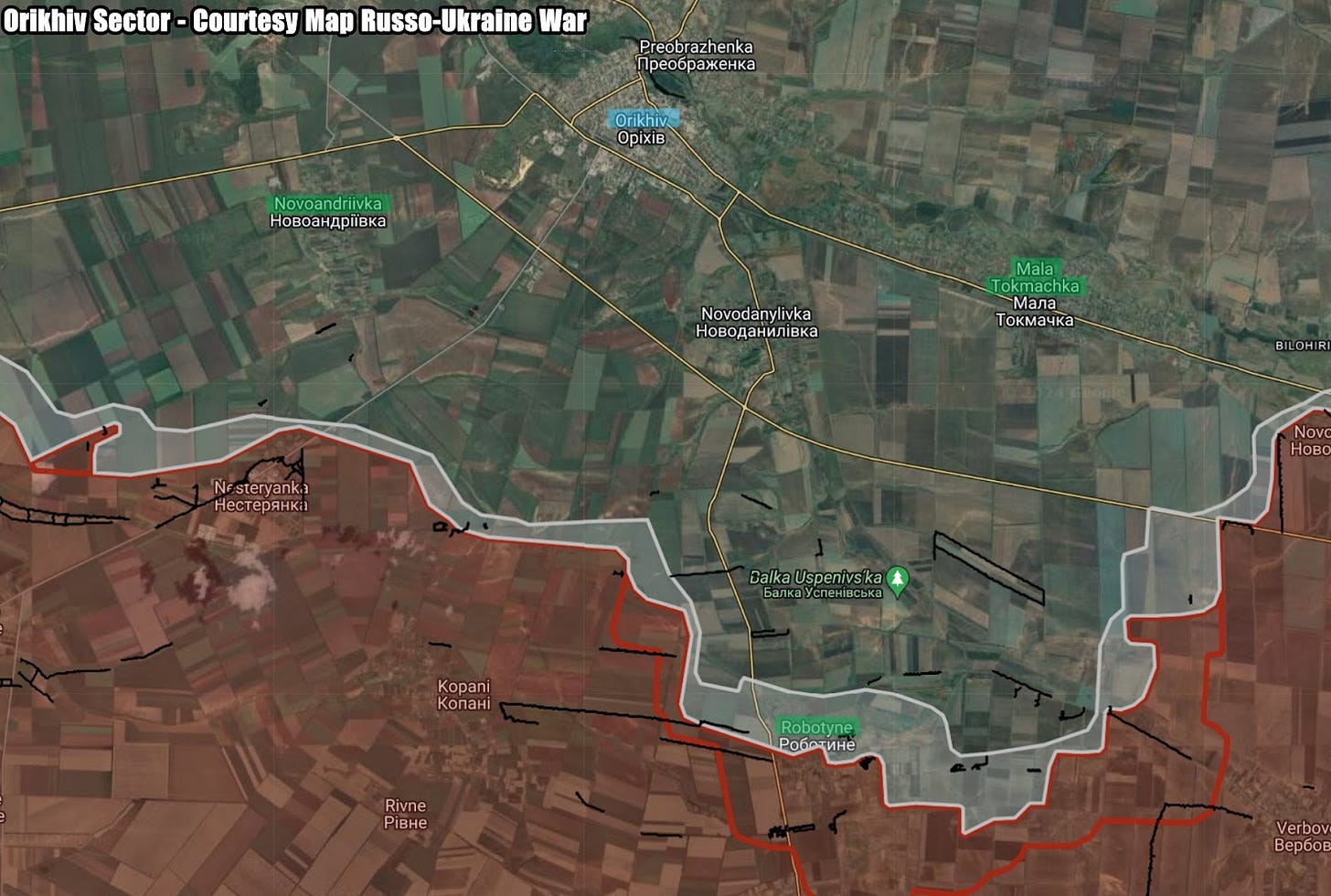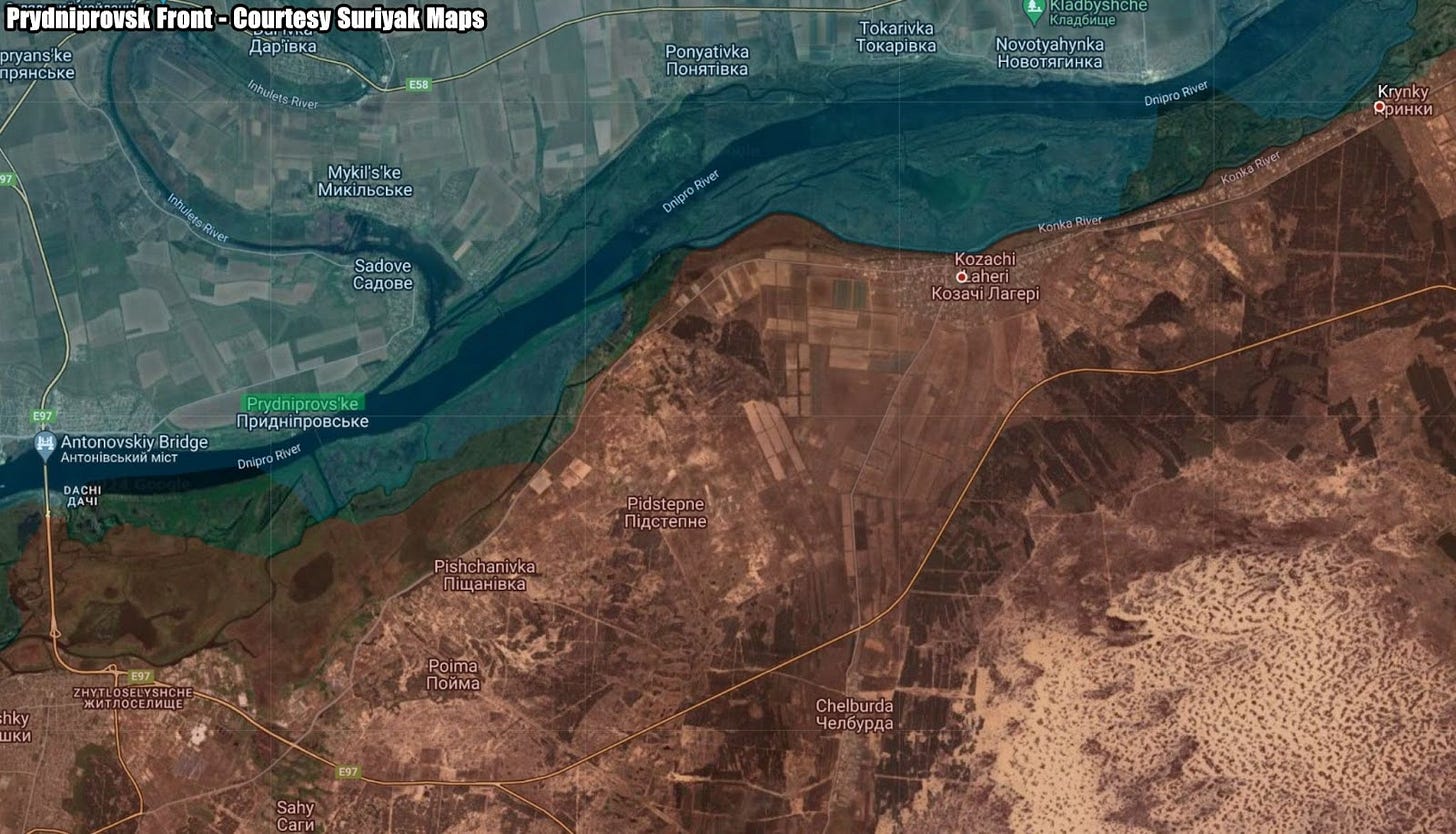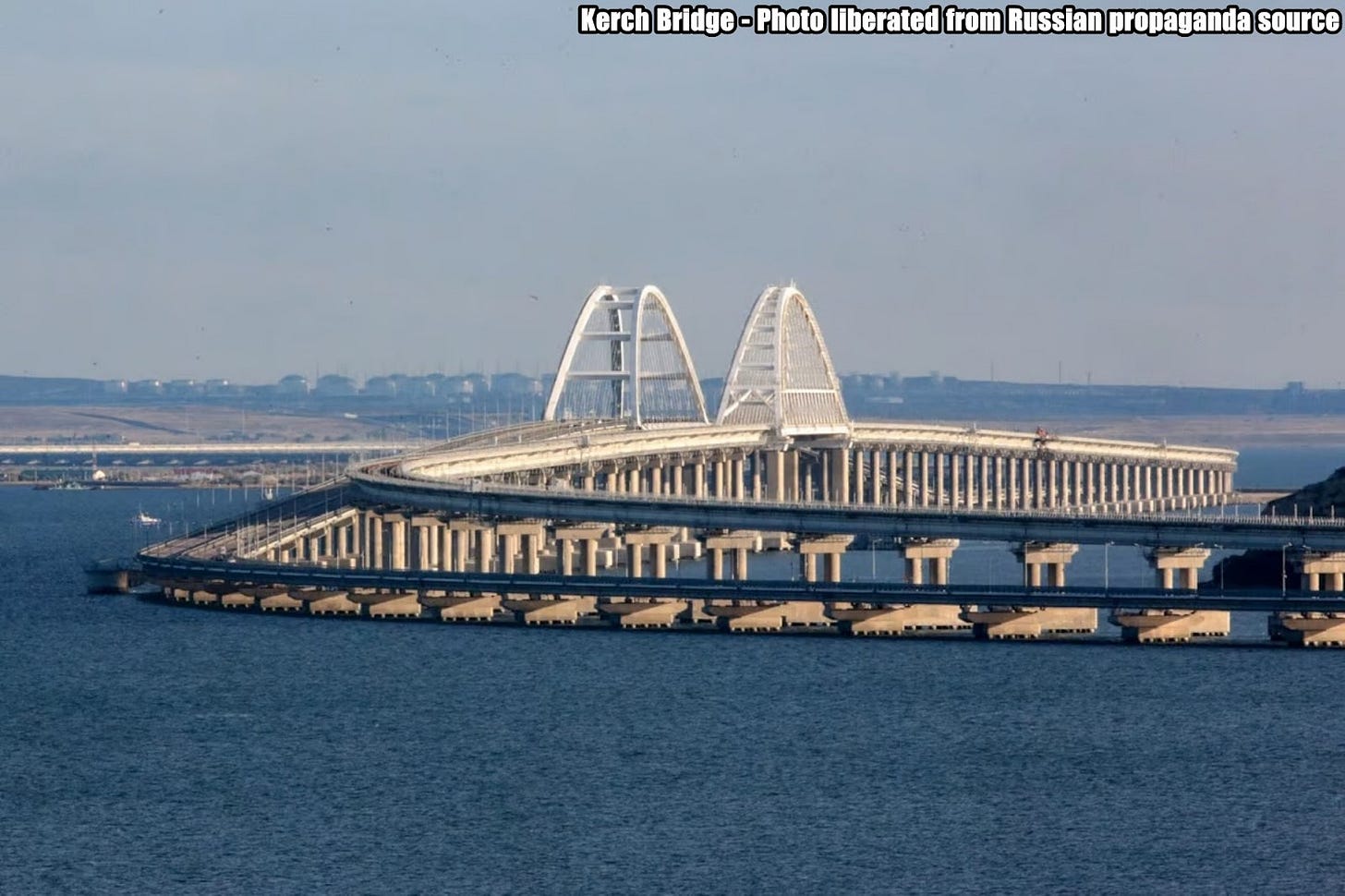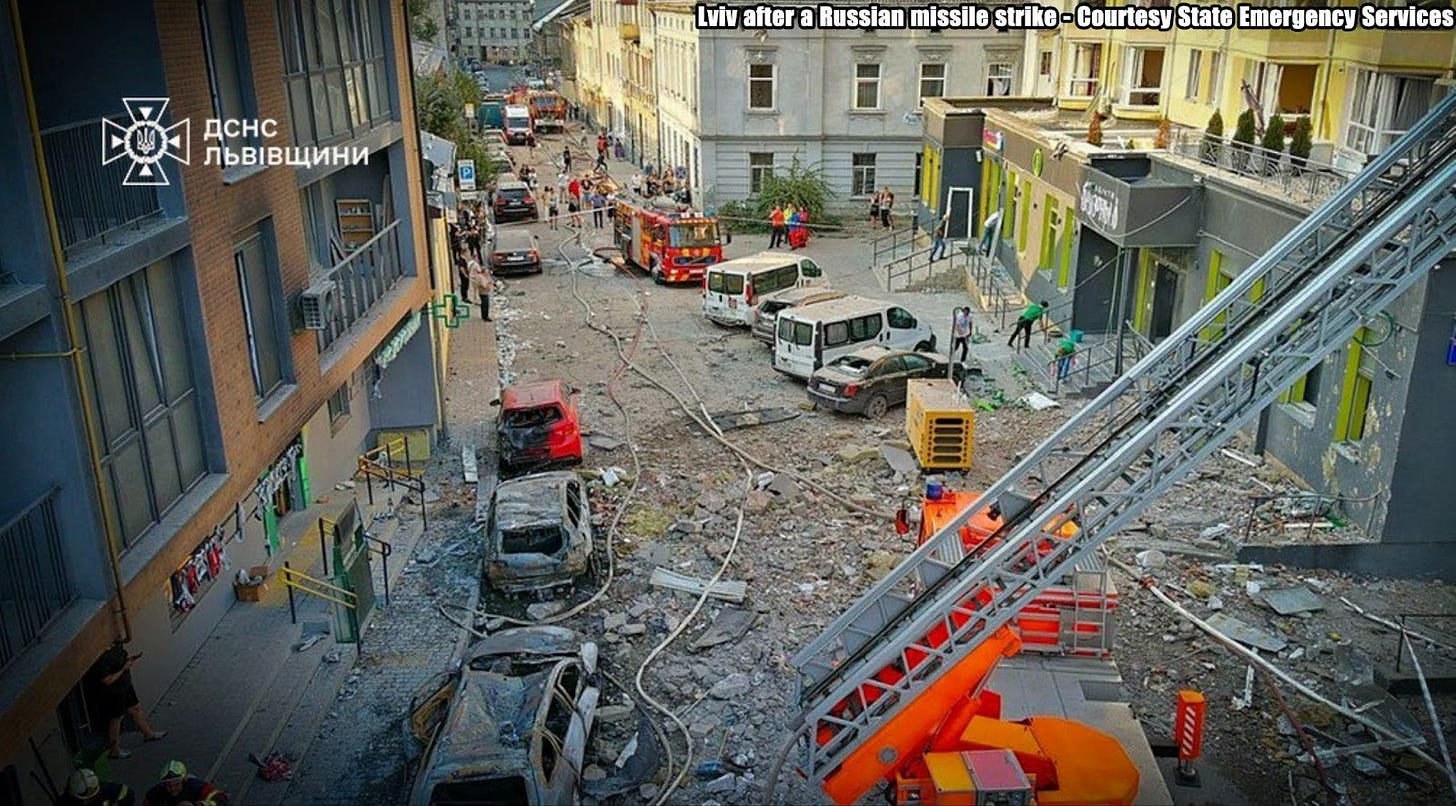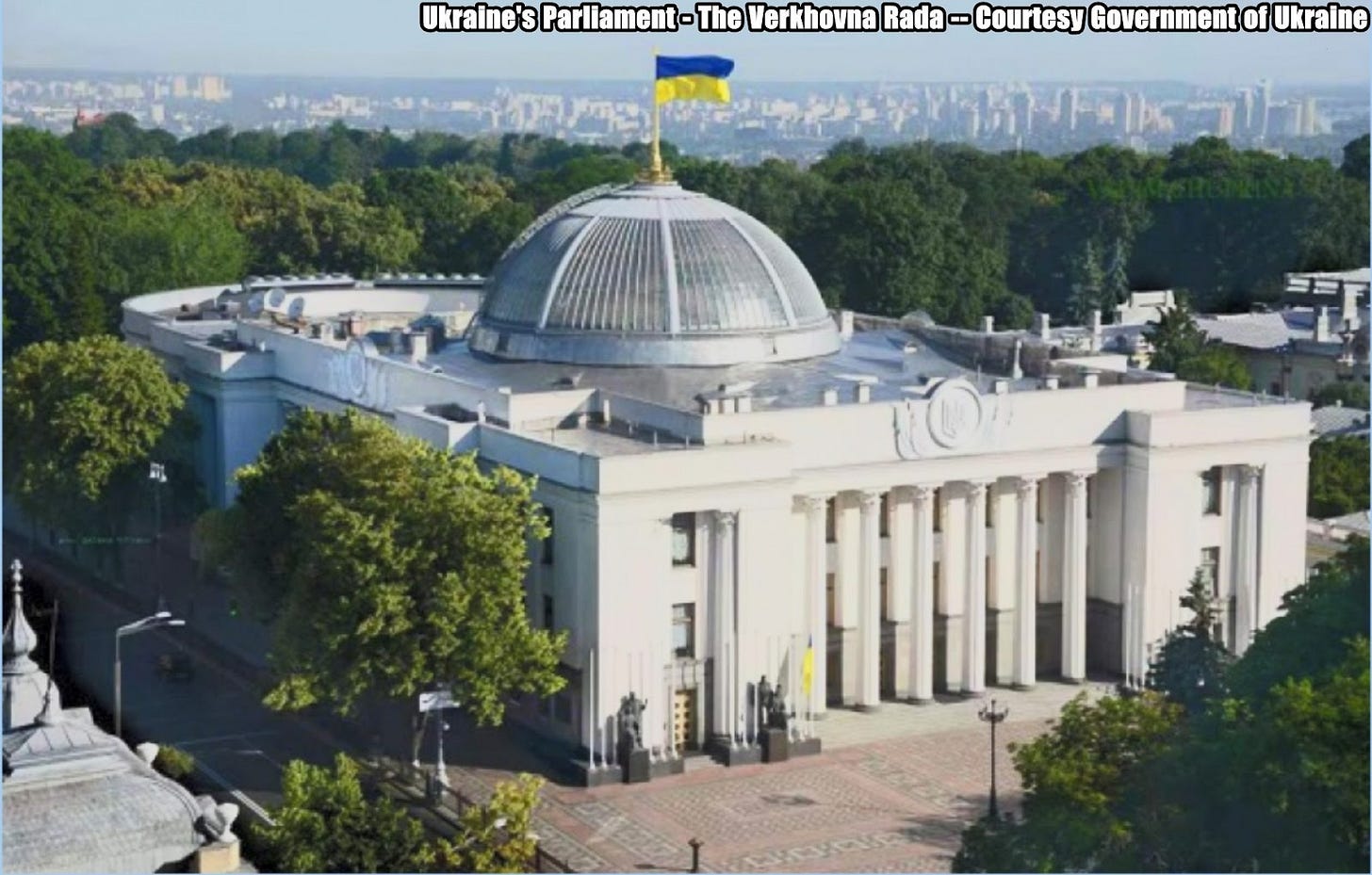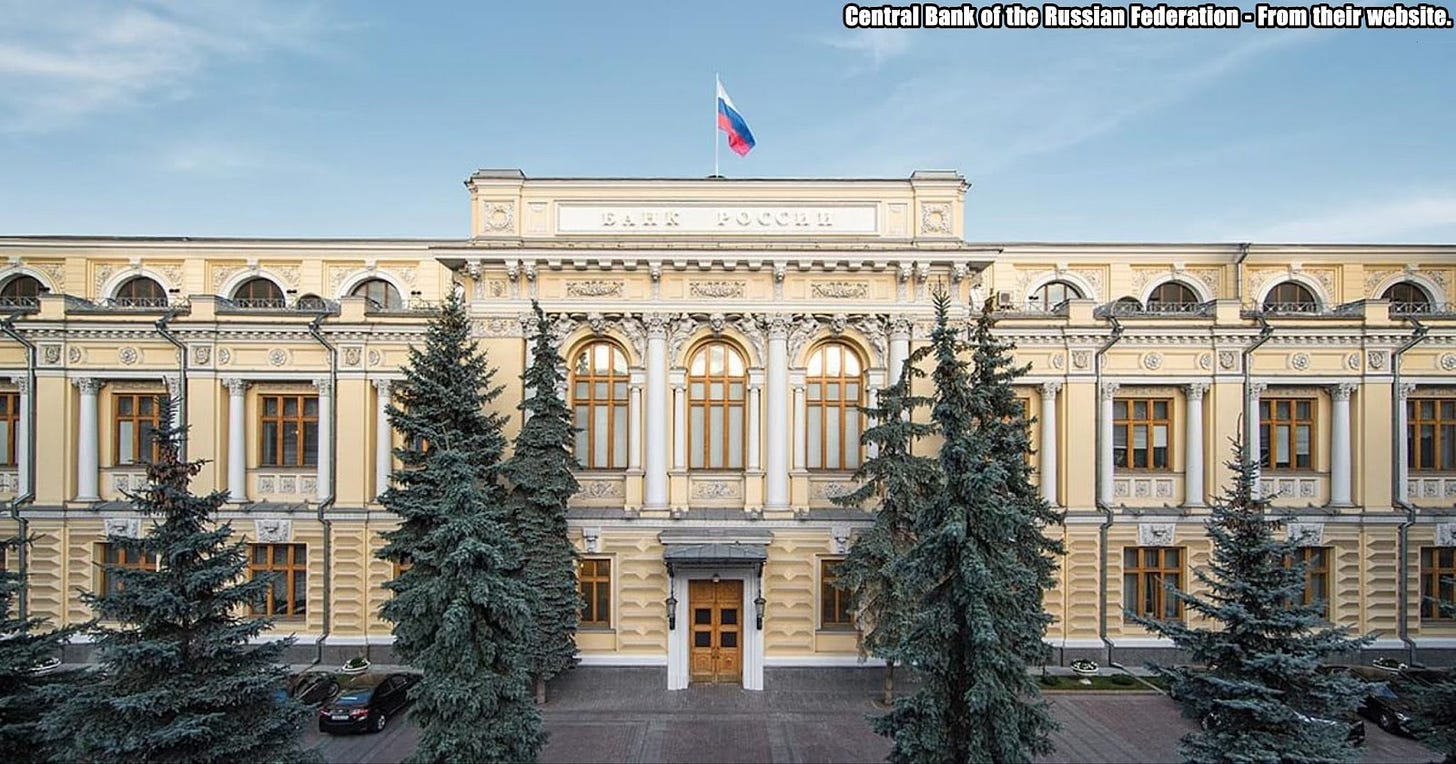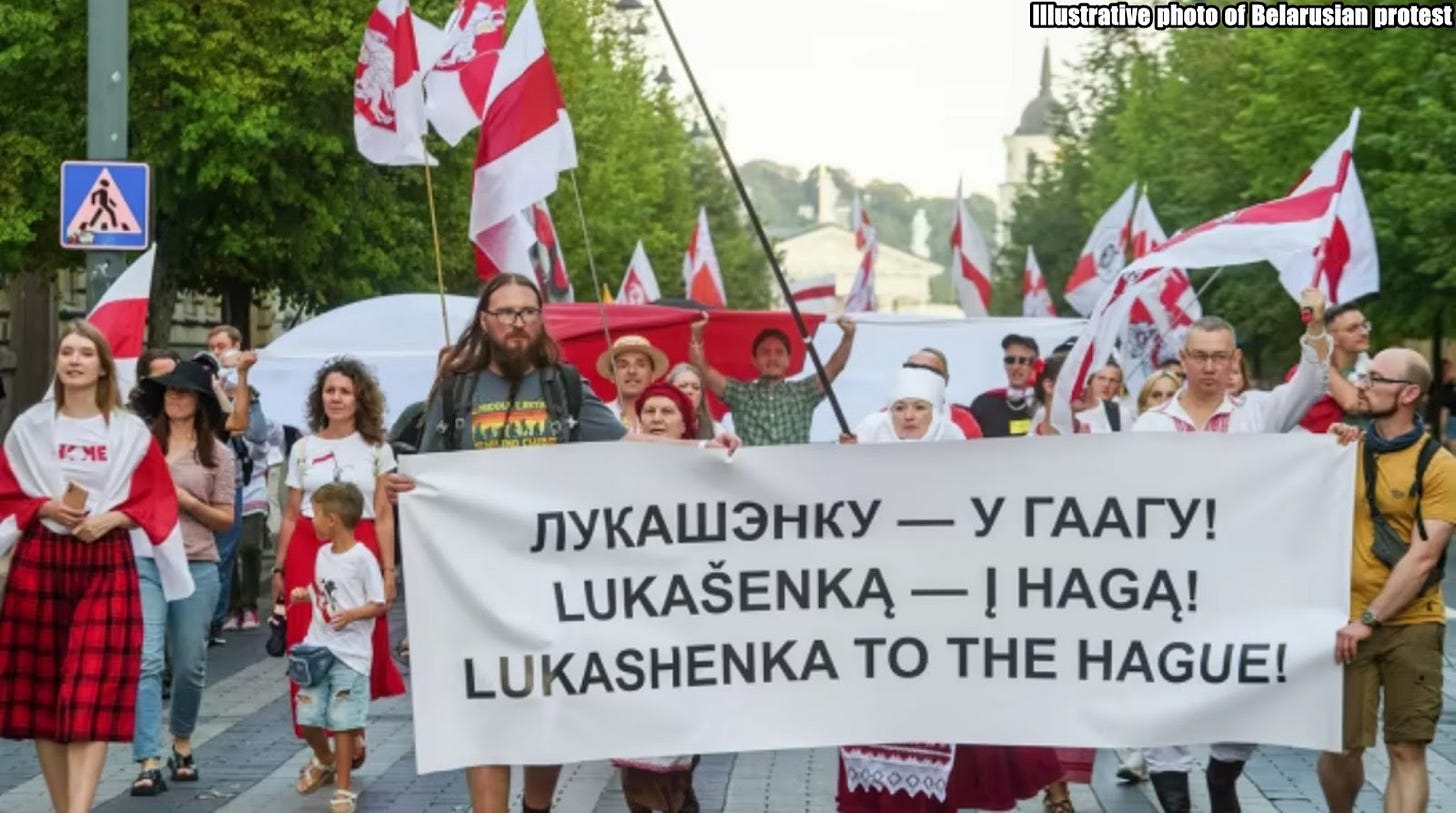Slava Ukraini! In early 2022 I began a Telegram channel aggregating news from a number of sources daily on the war in Ukraine. In June 2023 I began providing a daily draft for the Ukraine War Brief Podcast collecting news from over 70 sources daily, much of which formed the basis of the script. While the Podcast no longer exists I have continued to make this Brief available both on my own Substack and The People’s Media for those who wish to keep up with events on a daily basis.
All the latest news on the Russo-Ukraine War 6 days per week
ALONG THE CONTACT LINE
GSAFU Morning Report
The General Staff of the Armed Forces of Ukraine in its Operational Information update at 22:00 on Sep 03 stated that day 923 of the full-scale invasion of the Russian Federation against Ukraine was about to begin.
During the past day, 193 combat engagements took place. Over the past 24 hours, the enemy carried out 2 missile strikes, 62 air strikes, 555 drone strikes and more than 3,000 artillery strikes across the positions of Ukrainian forces.
At the same time, Ukrainian soldiers continue to inflict losses in manpower and equipment on the occupying troops, exhausting the enemy along the entire front line and continue to disrupt the plans of Russian occupiers to advance deep into the territory of Ukraine.
Air Force Daily Report
On the night of September 4, 2024, the enemy attacked Ukraine with air- and ground-based missiles, as well as with Shahed type UAVs. In total, 42 air targets were detected and escorted by the radio engineering troops of the Air Force:
- 2 X-47 M2 "Kinzhal" aeroballistic missiles from MiG-31K aircraft from the airspace of the Tula region. - Russian Federation;
- 2 Kh-22 cruise missiles from Tu-22M3 aircraft from the airspace over the Black Sea;
- 6 Kh-101 cruise missiles from Tu-95MS aircraft from the airspace of the Volgograd region - Russian Federation;
- 3 "Iskander-K" cruise missiles from the territory of the occupied Crimea;
- 29 strike UAVs "Shahed-131/136" (launch areas of the Kursk Region - Russian Federation).
Aviation, anti-aircraft missile forces, electronic warfare units and mobile fire groups of the Air Force and the Defense Forces of Ukraine were involved in repelling the enemy's air attack. As a result of anti-aircraft combat, 29 air targets were shot down:
- 4 Kh-101 cruise missiles;
- 3 "Iskander-K" cruise missiles;
- 22 strike BpLA "Shahed-131/136.
Six attack drones were lost in location (presumably suppressed by electronic warfare devices), one flew to Belarus.
Anti-aircraft defence worked in Lviv, Ivano-Frankivsk, Chernihiv, Dnipropetrovsk, Volyn, Ternopil, Kyiv, Zhytomyr, Poltava and Sumy regions.
The Russian Border Incursion
Ukrainian forces continue ground attacks in Kursk Oblast
The Institute for the Study of War (ISW), a US based think tank, in its Sep 03 Russian Offensive Campaign Assessment assessed that Russian sources claimed that Ukrainian forces continued ground attacks in Kursk Oblast but did not advance on September 3.
The Russian Ministry of Defense (MoD) and other Russian sources claimed that Ukrainian forces attacked near Komarovka (southwest of Korenevo), Korenevo, Olgovka (east of Korenevo), Cherkasskoye Porechnoye (north of Sudzha), and Borki (southeast of Sudzha).
A Russian milblogger claimed that Ukrainian forces are still in Olgovka but that the settlement is contested.] Another Russian milblogger claimed that Ukrainian forces are consolidating positions in Kursk Oblast. One Russian source claimed that Russian forces are counterattacking near Aleksandrovka (northeast of Korenevo).
It is too early to assess the strategic impact of Ukraine’s incursion into Kursk
ISW further stated that The wider impacts of the Ukrainian incursion into Kursk Oblast on the war and any envisioned diplomatic solution to the war are not yet clear, and assessments of these impacts are premature. Ukrainian President Volodymyr Zelensky stated during an interview with NBC on September 3 that Ukrainian forces are "conceptually" planning to hold territory in Kursk Oblast for an unspecified period of time, but did not offer further details about Ukraine's objectives for the incursion due to concerns about operational security.
While the Ukrainian incursion into Kursk Oblast appears to be having operational-level impacts on the Russian military, the incursion has likely not yet shifted Putin's strategic-level thinking. ISW assesses that Putin maintains that Russia can slowly and indefinitely subsume Ukraine through grinding advances and that Russia can achieve its goals through a war of attrition against Ukrainian forces and by outlasting Western support for Ukraine — assessments that make Putin averse to peace negotiations on terms other than Ukrainian and Western capitulation to his demands.
Attempts to assess the impacts of the Ukrainian incursion at this premature stage will likely come to partial and inaccurate conclusions about Ukraine's ability to change the trajectory of the conflict and the Kremlin's appetite for peace negotiations on acceptable terms. Ukrainian counteroffensives in Fall 2022 both successfully pushed the frontline back from Kharkiv City – Ukraine's second largest city – and liberated Kherson City and established a defensible frontline along the Dnipro River.
Russia will very likely resolve to continue its genocidal war against Ukraine unless faced with significant battlefield setbacks and strong Western support for Ukraine, and it is highly unlikely that any foreseeable Russian leader after Putin will be more amenable to peace negotiations and a just resolution to the war. The Kremlin has spent years denying the existence of a Ukrainian nation and delegitimizing Ukrainian sovereignty, and this effort has had widespread and likely long-term impacts on Russian society and elite opinion.
The Khortytsia operational-strategic group
(Responsible for the northeastern part of Ukraine. )
Kharkiv Sector: Ukrainian Defense Forces repelled 2 Russian attacks near Vovchansk.
Kupyansk Sector: Russia Forces carried out 8 offensive actions against Ukrainian defensive positions near Synkivka, Hlushkivka, Berestove and Stelmahivka. 1 engagement is ongoing.
Lyman Sector: Russian Forces carried out 27 offensive actions against Ukrainian defensive positions near Hrekivka, Nevske, Novosadovoye.
Siversk Sector: Russian forces carried out 5 unsuccessful assaults in the vicinity of Verkhnokamianske, Spine and Ivano-Darivka.
Kramatorsk Sector: Russian forces carried out 7 unsuccessful offensive actions near Chasiv Yar, Klishchiivka and Andriivka.
Toretsk Sector: Russian forces carried out 14 unsuccessful offensive actions near Toretsk, Nelipivka and Nui York. 2 engagements are ongoing.
The Tavria operational-strategic group
(Responsible for the central-eastern and southeastern part of Ukraine.)
Pokrovsk Sector : The greatest activity of the enemy continues to be in this sector. The enemy conducted 60 attacks against Ukrainian defences in this area over the last day concentrating in the vicinity of Novohrodivka and Mykhaillivka. 12 engagements are ongoing.
Kurakhove Sector: This sector was also extremely active today with 46 combat encounters. Russian forces tried to advance mainly in the areas of the settlements of Heorhiivka and Kostyantynivka. 3 engagements remain in progress.
Vremivka Sector: Russian forces made 10 assaults against Ukrainian positions near Vuhledar and Voidane.
Orikhiv Sector: The situation in this sector has not changed significantly. 6 enemy attacks were repulsed over the last day in the vicinity of Mala Tokmachka, Robotyne and Novoandriivka.
The Odesa operational-strategic group
(Responsible for Kherson, Qırım, (also known as Crimea) and the Black Sea.)
Prydniprovsk Sector: In this sector, over the last day, the situation has not changed significantly. Russian forces made 5 unsuccessful attempts to force Ukrainian units from their positions on the left bank of the Dnipro.
TEMPORARILY OCCUPIED TERRITORIES
Russia Defends Kerch Bridge with All Available Air Defense Systems
Russian Forces are using all available air defence systems, including S-500, S-400, S-300 and Pantsir-S1 to protect the Kerch bridge, Defence Express reports citing Ukrainian Navy spokesman, Dmytro Pletenchuk.
"The enemy is using all existing air defence systems. I'm not sure about the TOR systems, but we can see that they use long-range and short-range ones. These are such systems as S-300, S-400 and even S-500, and, of course, Pantsir," Pletenchuk noted.
As for Crimea, according to the spokesman, it is "stuffed with air defence systems", "because it has not only a pragmatic meaning for occupiers, but also a symbolic one".
THE HOME FRONT
Historic Lviv attacked 7 dead, 47 injured
In the early hours of September 4, Russian invaders launched a missile attack on Lviv. Residential buildings caught fire and two schools were damaged. Seven people have been killed, three of them children. Ukrinform reported citing Maksym Kozytskyi, the head of the Lviv Regional Military Administration, wrote this on Telegram.
Following the Russian strike on Lviv, 47 people were hospitalised, seven of whom are currently in serious condition, people were reported trapped under the rubble.
“As of now, 47 individuals injured in the enemy's nighttime attack are currently receiving treatment at three medical facilities in Lviv. The patient list includes seven children. They have sustained moderate injuries. At least seven adults are currently in a serious condition. Doctors are fighting for their lives,” the statement reads.
Ukrainian Government “reset”
President Zelenskyy announced recently a major cabinet shuffle was upcoming. Today there are a number of confusing news reports of government ministers submitting their resignations, all of which have to be voted on and approved by the Verkhovna Rada. Some have and some have not been accepted, additionally it is reported that some of the ministers will be appointed to the same or different cabinet posts.
As a result I think it best to wait until President Zelenskyy announces his new cabinet tomorrow to report on this. The new cabinet will also have to be approved by parliament.
Two nuclear units at two Ukrainian power plants are not operating at full capacity
Two nuclear units at two Ukrainian nuclear power plants (NPPs) are not operating at full capacity, and the generation deficit has increased by 625 MW. Ukrainska Pravda reported citing industry sources.
A power unit at one of the NPPs is not operating at full capacity: 200 MW of power has been lost. The source said problems with it began in the spring of 2023.
A nuclear unit at another Ukrainian NPP reduced its capacity on Tuesday, 3 September, creating a deficit of 425 MW. For security reasons, the nuclear power plants in question have not been identified.
RUSSIAN WORLD
Russia halts ruble support as Central Bank struggles with yuan transactions
Starting Sep. 6 and continuing through Oct. 4, the Ministry of Finance will purchase foreign currency and gold worth 173 billion rubles (approximately 8.2 billion rubles per day) under the country's fiscal rules. New Voice reports.
At the same time, the Central Bank is selling about 8.4 billion rubles' worth of foreign currency daily, compensating for previous spending from the National Welfare Fund (NWF). Together, their transactions result in a net sale of just 200 million rubles’ worth of yuan per day—a relatively insignificant amount in the context of the currency market, according to The Moscow Times.
In August, Russia's Central Bank was selling yuan on behalf of itself and the Ministry of Finance at a rate of 7.3 billion rubles per day. While the Central Bank’s sales are expected to remain consistent through the end of the year, the Finance Ministry’s purchases fluctuate each month based on expected oil and gas revenues and the accuracy of prior forecasts.
Aleksey Antonov, head of investment consulting at Alor Broker, anticipates a “gradual devaluation” of the ruble this fall. The near cessation of Central Bank sales could weaken the ruble’s exchange rate, agrees Yegor Susin, managing director of GPB Private Banking, who adds that it will also remove the excess supply of yuan on the exchange.
Previously, reports emerged that the Russian branch of a major Chinese bank had stopped working with clients from Russia. Russia's difficulties with Chinese banks began in late 2023, influenced by an executive order from U.S. President Joe Biden, which allowed the U.S. Treasury to impose secondary sanctions on third-country banks for collaborating with sanctioned Russian companies and aiding Russia’s defense sector.
In April 2024, several Chinese banks stopped accepting yuan payments from Russia due to concerns over secondary U.S. sanctions. By July 2024, Chinese banks had declared Russian yuan "dirty" and refused to accept them. Currently, about 80% of yuan-denominated payments are returned to Russia.
Russian businesses have complained that even smaller Chinese banks are rejecting their payments.
Additionally, Bloomberg reported that Russia's Central Bank is preparing for a scenario in which yuan trading on Russian exchanges could be halted. Sources close to the regulator suggest that Chinese banks facilitating these transactions are gradually winding down their cooperation with Russia’s “toxic” exchanges.
NEWS WORLDWIDE
Belarusian leader pardons 30 more political prisoners
Alexander Lukashenko, the self-proclaimed president of Belarus, has signed a decree pardoning 30 political prisoners convicted of what the Belarusian authorities say are "protest-related crimes".
Seven women and 23 men have been pardoned, most of them parents of minors and young children.
The decree states that they have fulfilled the mandatory conditions for being pardoned: they applied for pardon, admitted their guilt, expressed sincere repentance, and have pledged to live in accordance with the law.
On 16 August, Lukashenko signed a decree pardoning 30 other people convicted of "protest-related crimes". 14 women and 16 men were released, including people of retirement age and some who were seriously ill.
Scholz: Germany orders 17 IRIS-T air defense systems for Ukraine
Chancellor Olaf Scholz took delivery of an advanced air-defense system for the German armed forces and confirmed orders for five more, as well as an additional 17 units for Ukraine to help repel Russian attacks. Bloomberg reports.
Speaking Wednesday at an air force base on the north coast near Kiel, Scholz said the procurement for the Bundeswehr of the six IRIS-Ts, manufactured by Diehl Defence GmbH & Co. KG, will play a key role in strengthening the European Sky Shield Initiative. So far, 21 nations including the UK and Turkey have signed up to the German-led project, designed to make the continent less vulnerable to air strikes at a time of increasing geopolitical tension.
The IRIS-Ts earmarked for Ukraine are on top of seven already delivered, which have helped bring down more than 250 Russian rockets, drones and missiles and saved many lives, Scholz said. Four will be sent before the end of this year and the rest starting next year, he pledged.
“This shows that German support for Ukraine is not letting up,” Scholz told guests including Defense Minister Boris Pistorius.
“We have planned ahead and secured contracts and financing in a timely manner so that Ukraine can continue to fully rely on us in the future,” he added. “And that also shows that our industry is highly efficient — when it has the necessary planning security.”
Despite mounting budget constraints, Scholz’s government has been one of the most generous backers of Ukraine since Russia’s full-scale invasion, supplying or promising materiel worth some €28 billion ($31 billion), behind only the US in value.
MILITARY & TECH
Nothing major to report.
That’s it for today’s Draft folks if you would like to keep up with events in Ukraine daily please consider subscribing, its free!
Feel free to share this update with your friends. Heroyam Slava!







